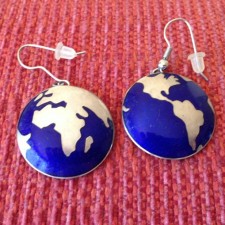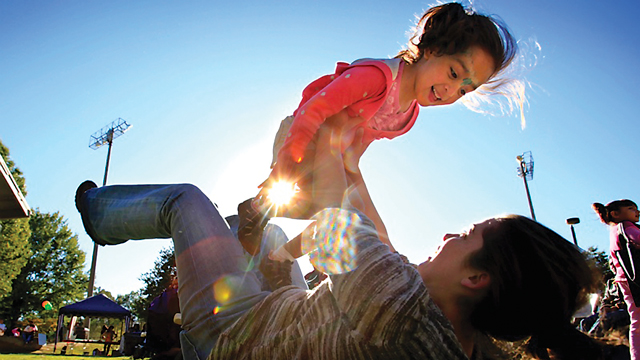As editor of a widely read and highly regarded family lifestyle magazine, I am privy to important information to which most parents do not have regular access.
I’ll bet you were not informed via email, for example, that April has been designated National Stress Awareness Month. Or that May is National Pregnancy Awareness Month. I’m not sure what we’re supposed to do with this information exactly, but I do think it’s interesting that these two should back up to each other.
I also know that had you been left blissfully unaware to go on about your spring – pregnant or not, stressed or no – National Celibacy Awareness Month, that is to say, June, would still have arrived.
My point is this: April 22 is Earth Day, and while it might register on a few more parental radar screens than National Stress Awareness Month, the day itself doesn’t seem to get a whole lot of respect. Perhaps, like celibacy, pregnancy, and stress, our beloved planet Earth should get its very own month.
But the truth is, the first Earth Day in 1970, was truly a historic event.
Its principal founder, Wisconsin Senator Gaylord Nelson, was intrigued by the turn-out at anti-Vietnam War teach-ins on college campuses in the sixties. Nelson wondered, Could similar energy be channeled into a grassroots protest over what was happening to the environment? That first Earth Day created a rare show of solidarity that spread from coast to coast, and perhaps most significantly, across party lines.
Participants in communities, colleges and universities, and secondary and primary schools nationwide were united for one cause. “More importantly,” as Nelson told interviewers later, “it brought 20 million Americans out into the spring sunshine for peaceful demonstrations in favor of environmental reform.” This grassroots phenomena eventually lead to national legislation like the Clean Air, Clean Water, and Endangered Species Acts, and later, to the creation of the Environmental Protection Agency.
So what else came of Earth Day?
 I, for one, bought a pair of amazing enamel and sterling silver commemorative Earth Day earrings which I usually forget to wear come the twenty-second of April. On a slightly broader level, event organizers from schools, churches, and yes, eco-friendly associations all over the United States were presented with the perfect theme around which to plan their spring festivals. That said, I have a confession: I have attended a total of two Earth Day events over the years. I don’t carry a tote bag made entirely of juice pouches, but I do have a healthy respect for the people who make them. We don’t compost, but I do feel a modicum of guilt when I hear about someone who does.
I, for one, bought a pair of amazing enamel and sterling silver commemorative Earth Day earrings which I usually forget to wear come the twenty-second of April. On a slightly broader level, event organizers from schools, churches, and yes, eco-friendly associations all over the United States were presented with the perfect theme around which to plan their spring festivals. That said, I have a confession: I have attended a total of two Earth Day events over the years. I don’t carry a tote bag made entirely of juice pouches, but I do have a healthy respect for the people who make them. We don’t compost, but I do feel a modicum of guilt when I hear about someone who does.
We’re a light green family. When it comes to honoring the spirit of Earth Day, there’s a principle at work in the Schwartzkopf house that echoes a familiar Christmas concept. That is, we look for ways to make it feel like Earth Day every day. Like recycling, turning off the car when waiting on the kids, washing clothes in cold water, repurposing plastic bags and boxes, swearing off paper plates, using cloth napkins, packing reusable containers in lunchboxes, using rechargeable batteries, not buying cheap clothing, and walking or biking whenever we can, instead of automatically piling into the van.
So these days, as we engage in heated conversations about global warming and greenhouse gas emissions that can be fraught with political implications, I ask: Does it really matter whether or not these choices have any significant impact on Mother Earth’s long-term health and well-being? Not really.
Because if there is the slightest chance that small steps like these, taken by one family like mine, might make a difference, we owe it to our kids to take them. And you know what? This year, I might even remember my earrings.




